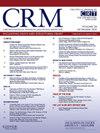Navitor经导管心脏瓣膜TAVI术后永久起搏器植入的预测因素。
IF 1.9
Q3 CARDIAC & CARDIOVASCULAR SYSTEMS
引用次数: 0
摘要
目的:本研究旨在确定使用Navitor™(Abbott Chicago, IL, USA)经导管心脏瓣膜(THV)经导管主动脉瓣植入术(TAVI)后30天内永久性起搏器植入术(PPI)的预测因素。方法和结果:这项回顾性双中心研究纳入了173例使用Navitor™THV进行经股动脉TAVI的严重主动脉瓣狭窄患者。排除既往有心脏起搏器植入和瓣膜内手术的患者。平均年龄81.5±5.0岁,54例(31%)需要使用PPI;男性居多(57%比37%,p = 0.01),左心室射血分数较高(55.3±9.0比52.4±9.2,p = 0.049), COPD发生率较高(30%比16%,p = 0.017),且既往存在右束支阻滞(RBBB;17%比0.8%,p 4毫米(75.9%比52.1%,p = 0.002),和29毫米阀门通径使用(46.3%比26.9%,p = 0.010)。在多变量分析中,COPD (OR 2.4, p = 0.049)、预先存在的RBBB (OR 34.4, p = 0.001)、环- thv过大(OR 1.2, p = 0.002)和植入深度bbb4mm (OR 3.2, p = 0.007)是PPI的独立预测因子。ROC分析(AUC 0.58)确定了预测PPI的最佳临界值为环空- thv过大15%。结论:环-THV过大是Navitor™THV治疗TAVI后PPI的一个新的独立预测因子。本文章由计算机程序翻译,如有差异,请以英文原文为准。

Predictors of permanent pacemaker implantation after TAVI with Navitor transcatheter heart valve
Aims
This study aimed to identify predictors of permanent pacemaker implantation (PPI) within 30 days after transcatheter aortic valve implantation (TAVI) using the Navitor™ (Abbott Chicago, IL, USA) transcatheter heart valve (THV).
Methods and results
This retrospective two-center study included 173 patients with severe aortic stenosis undergoing transfemoral TAVI with Navitor™ THV. Patients with prior pacemaker implantation and valve-in-valve procedures were excluded. Mean age was 81.5 ± 5.0 years, and 54 patients (31 %) required PPI; they were more often male (57 % vs. 37 %, p = 0.01), had higher left ventricular ejection fraction (55.3 ± 9.0 vs. 52.4 ± 9.2, p = 0.049), and higher rates of COPD (30 % vs. 16 %, p = 0.017) and pre-existing right bundle branch block (RBBB; 17 % vs. 0.8 %, p < 0.001). Procedural factors associated with PPI included greater annulus-to-THV oversizing (13.6 % ± 3.4 vs. 12.5 % ± 3.1, p = 0.041), implantation depth > 4 mm (75.9 % vs. 52.1 %, p = 0.002), and 29 mm valve size use (46.3 % vs. 26.9 %, p = 0.010). At multivariable analysis, COPD (OR 2.4, p = 0.049), pre-existing RBBB (OR 34.4, p = 0.001), annulus-to-THV oversizing (OR 1.2, p = 0.002), and implantation depth > 4 mm (OR 3.2, p = 0.007) were independent predictors of PPI. ROC analysis (AUC 0.58) identified an optimal cut-off of 15 % annulus-to-THV oversizing for predicting PPI.
Conclusions
Annulus-to-THV oversizing emerges as a novel independent predictor for PPI after TAVI with Navitor™ THV.
求助全文
通过发布文献求助,成功后即可免费获取论文全文。
去求助
来源期刊

Cardiovascular Revascularization Medicine
CARDIAC & CARDIOVASCULAR SYSTEMS-
CiteScore
3.30
自引率
5.90%
发文量
687
审稿时长
36 days
期刊介绍:
Cardiovascular Revascularization Medicine (CRM) is an international and multidisciplinary journal that publishes original laboratory and clinical investigations related to revascularization therapies in cardiovascular medicine. Cardiovascular Revascularization Medicine publishes articles related to preclinical work and molecular interventions, including angiogenesis, cell therapy, pharmacological interventions, restenosis management, and prevention, including experiments conducted in human subjects, in laboratory animals, and in vitro. Specific areas of interest include percutaneous angioplasty in coronary and peripheral arteries, intervention in structural heart disease, cardiovascular surgery, etc.
 求助内容:
求助内容: 应助结果提醒方式:
应助结果提醒方式:


